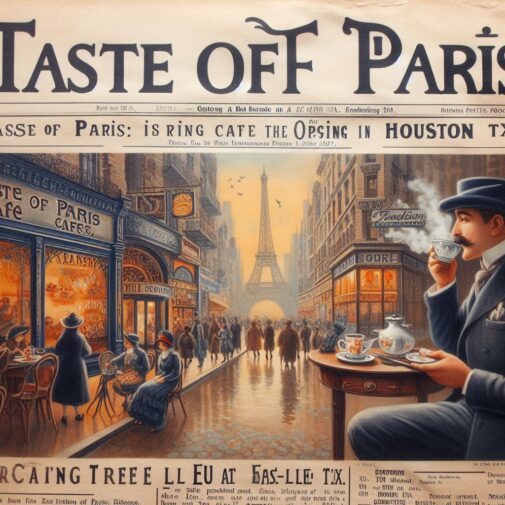The Story of Cafés: From the First Coffee Shop to the Global Phenomenon
Table of Contents:
-
Introduction
-
The First Coffee Shop: A Historic Milestone
-
The Rise of Sidewalk Cafés
-
Cafés Around the World: A Global Phenomenon
-
The Allure of Cafés: Why They Remain Popular
-
Pro Tips for Enjoying Your Café Experience
-
Conclusion
Introduction
Cafés hold a special place in the hearts of coffee lovers and social butterflies alike. These inviting spaces have become synonymous with relaxation, conversation, and a comforting cup of coffee. But have you ever wondered about the origins of cafés and their enduring appeal? In this article, we delve into the fascinating story of coffee shops, from the world’s first café to the rise of sidewalk cafés. We will also explore why cafés have gained immense popularity worldwide. So, grab your latte and join us on a journey through time and culture as we uncover the captivating history and allure of cafés.
1. The First Coffee Shop: A Historic Milestone
The story of cafés begins with the establishment of the first coffee shop in the world. In the 15th century, coffee made its way from the Ethiopian highlands to the Arabian Peninsula, where it quickly became a popular beverage. The world’s first coffee shop, known as Kiva Han, opened its doors in Istanbul, Turkey, in 1475. This historic milestone marked the birth of a new social gathering place centered around the consumption of coffee.
2. The Rise of Sidewalk Cafés
The concept of sidewalk cafés emerged in the 17th century, particularly in Europe. These outdoor establishments allowed patrons to enjoy their coffee while watching the hustle and bustle of city life. The city of Vienna, Austria, played a significant role in popularizing the sidewalk café culture during the late 17th century, and this trend soon spread to other European cities. Moreover, the concept of sidewalk cafés gained momentum during the 17th century, particularly in Europe.


3. Cafés Around the World: A Global Phenomenon
Over the centuries, cafés have transcended borders and become a global phenomenon. From Europe to the Americas, Asia to Africa, coffee shops have become ingrained in the social fabric of various cultures. Here are some notable examples:
– Europe: The café culture in Europe is legendary, with cities like Paris, Rome, and Vienna renowned for their charming cafés. These establishments serve as meeting places for artists, intellectuals, and locals seeking a cozy spot to unwind.
– Americas: In the Americas, coffee shops have evolved into vibrant hubs of creativity and community. From the iconic cafés of New York City to the bohemian coffeehouses of San Francisco, these establishments have played a significant role in shaping cultural movements and fostering intellectual discussions.
– Asia: In countries like Japan, South Korea, and Vietnam, cafés have gained immense popularity in recent years. These modern cafés offer unique and innovative coffee experiences, blending traditional brewing methods with contemporary aesthetics.
– Africa: In North African countries such as Morocco and Egypt, traditional coffeehouses known as “qahwah” have a rich history. These establishments serve as gathering places for locals to socialize and enjoy strong, flavorful coffee.
4. The Allure of Cafés: Why They Remain Popular
Cafés continue to captivate people worldwide for several reasons. Here are some key factors contributing to their enduring popularity:
– Socializing and Community: Cafés provide a welcoming environment for social interaction, whether it’s catching up with friends, engaging in intellectual discussions, or simply people-watching. They foster a sense of community and connection.
– Ambiance and Comfort: The cozy and inviting atmosphere of cafés creates a haven for relaxation and contemplation. The aroma of freshly brewed coffee, soft background music, and comfortable seating all contribute to a soothing ambiance.
– Culinary Delights: Many cafés offer a wide range of culinary delights beyond coffee, including pastries, sandwiches, and specialty beverages. This diverse menu appeals to a broader audience and enhances the overall café experience.
– Work and Study Spaces: With the rise of remote work and digital nomadism, cafés have become popular work and study spaces. These establishments offer a change of scenery and provide a productive environment for individuals seeking a break fromthe confines of their homes or offices.
5. Pro Tips for Enjoying Your Café Experience
To make the most of your café experience, consider these pro tips:
– Try Local Specialties: Embrace the culture of the café’s location by trying local coffee specialties or regional delicacies.
– Engage in Conversation: Strike up a conversation with fellow café-goers or the baristas. Cafés often attract interesting and diverse individuals who can enrich your experience.
– Explore Different Cafés: Don’t limit yourself to a single café. Explore different establishments in your area or while traveling to discover unique atmospheres and flavors.
– Unplug and Relax: Take a break from technology and enjoy the present moment. Use your café visit as an opportunity to unwind, read a book, or simply observe your surroundings.
– Support Local Businesses: Instead of frequenting chain cafés, opt for independent and local coffee shops to support the local economy and experience authentic flavors.
Conclusion
From the inception of the world’s first coffee shop to the proliferation of cafés across the globe, these establishments have truly stood the test of time. Cafés have transcended their primary purpose of serving coffee and have become treasured social spaces that foster community, creativity, and relaxation. Whether you’re a coffee aficionado, a social butterfly, or someone seeking a moment of respite, cafés offer a haven of warmth, conversation, and delightful flavors. So, the next time you step into a café, take a moment to appreciate the rich history behind this beloved institution and savor the experience it offers.
